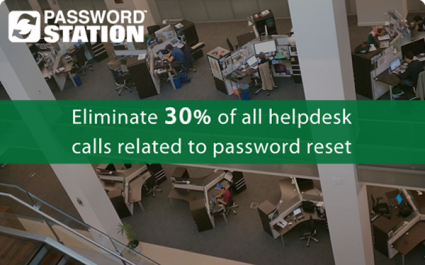Users have a multitude of passwords to recall, often due to the fact that password security requirements are not universally the same. There’s the simple go-to password, the slightly more complicated password, the one that passes most security requirements… and then there’s the password that’s asking for your social, first born child, the national anthem, and an uppercase letter.
Okay, it’s not quite that complicated, but sometimes it feels that way.
With so many different iterations of passwords to remember, it’s expected that eventually users will need a password reset. Depending on how many users you have, that can be anywhere from a couple hundred to a couple thousand resets per month. Automating the password reset process not only makes it quicker, but decreases help desk calls by 30%.
Avatier’s Password Management hands the power of self-service password reset management back to the user. Help desk password reset requests are the No. 1 reason for calls. Password Management eradicates help desk password reset requests. It also makes active directory password reset a snap through self-service administration and automation.
By letting trusted users engage in self-service password reset, Password Management eliminates time previously wasted by IT staff in conducting enterprise password management. Password Management provides the IT cyber security audit controls necessary to verify users while saving you money.
Password station includes alerts, authentication, reports, security, task automation, unenroll, and Avatier Credential Providers.
Alerts come into play when a user incorrectly answers a security question challenge when trying to reset their password, or an administrator makes a change in the AIMS configuration. Alerts are email notifications that are sent to an individual or a group of individuals when these AIMS system events occur.
Authentication allows administrators to define how users prove their identity for the Password Management Portal. When using multiple authentication methods, you may also define which order authentication occurs. Users may even have the choice between parallel authentication tools.
Reports, when configured, are emailed to individuals, or distribution groups that are mail enabled based on the selected distribution frequency.
Security settings control items such as the number of challenge questions a user must answer before being allowed to reset a forgotten password, the length and pattern filtering of the question responses, built-in intrusion detection actions, identity answer storage, end user display options, and help desk function settings.
Task Automation enables you to extend the functionality of AIMS by allowing execution batch files or programs external to the AIMS system to run when certain AIMS events occur, such as a successful password reset or account unlock.
Unenroll is used to unenroll users from Password Management. Once unenrolled, the user will no longer be able to use Password Management’s features until they complete the enrollment process again. This does not affect the user’s domain account in any other way.
This feature is also used to free up Password Management licenses for accounts that are in a disabled state.
Avatier Credential Providers allow the end user to access Password Management from the login screen of a workstation. Through this, users who have forgotten their workstation password can have it reset without administrative assistance. Change password functions can be done across all connected systems, and other Password Management functions may be utilized through the AIMS secure browser and secure directions to the Password Management module.
At the end of the day, password resets cannot be avoided, but they can be handled quickly and efficiently. Forgetting a password should not be an ordeal for your users and help desk staff, but rather a quickly remedied situation. Avatier’s Password Management can be that solution.
To learn more, please visit Avatier’s Password Management.





